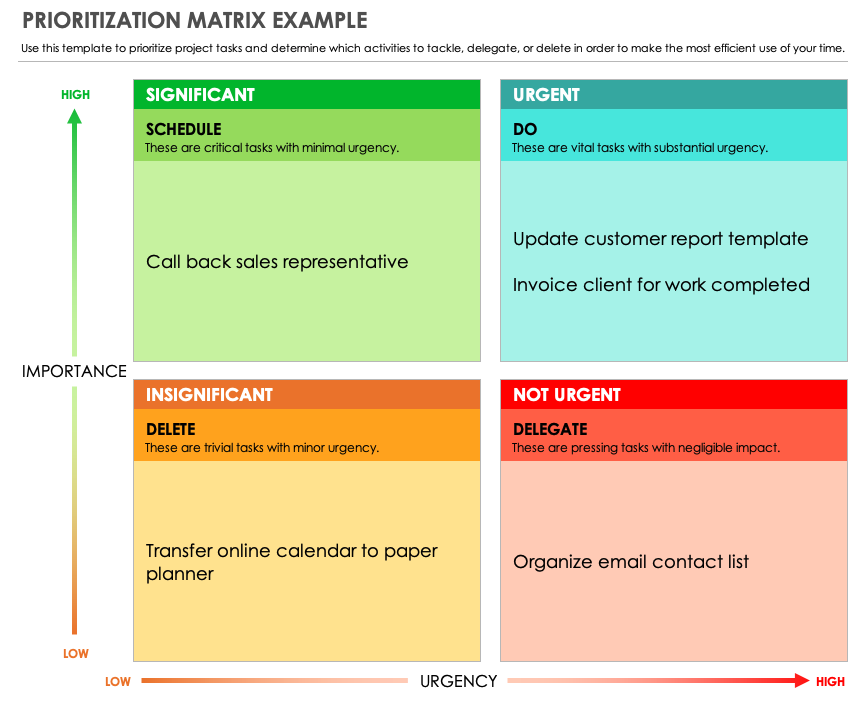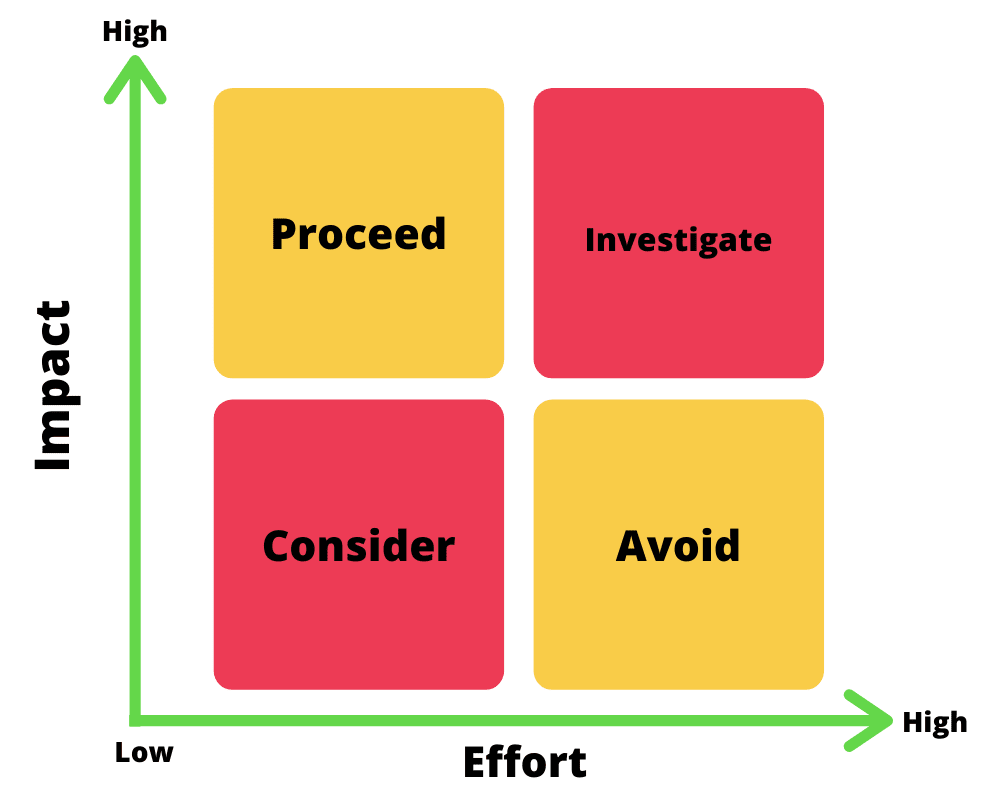

In the action priority matrix model, effort can denote such things as cost, time, organizational obstacles, or any obstacle that might impede a task being performed. Otherwise known as hard slog tasks, they should be avoided wherever possible. Thankless tasks (high effort, low impact) While they are low in effort and in most cases essential, their impact is minimal. Including tasks such as filing, data entry, and email. Major projects yield great returns but they are often time and resource-intensive.Īs a result, they have the potential to negate several smaller and quicker wins. Major projects (high impact, high effort) The most desirable tasks because of their ability to deliver a worthwhile return for relatively little effort. This yields four categories Quick wins (high impact, low effort) Those who make wise choices on which tasks to pursue first maximize return on investment.Ĭonversely, those who make poor choices devote themselves to time and resource-intensive tasks that hinder growth. The APM has important implications for businesses. The action priority matrix (APM) is a diagrammatic representation that clearly illustrates which activities must be finished on time and which can be left until a later date.


This matrix helps assess what projects need to be undertaken and the potential impact for each. These quadrants are plotted against the effort required to complete a task (x-axis) and the impact (benefit) that each task brings once completed (y-axis). The matrix itself is represented by four quadrants on a typical cartesian graph. Home PageĪn action priority matrix is a productivity tool that helps businesses prioritize certain tasks and objectives over others.Digital Business Models Podcast by FourWeekMBA.Business Strategy Book Bundle By FourWeekMBA.An Entire MBA In Four Weeks By FourWeekMBA.100+ Business Models Book By FourWeekMBA.


 0 kommentar(er)
0 kommentar(er)
